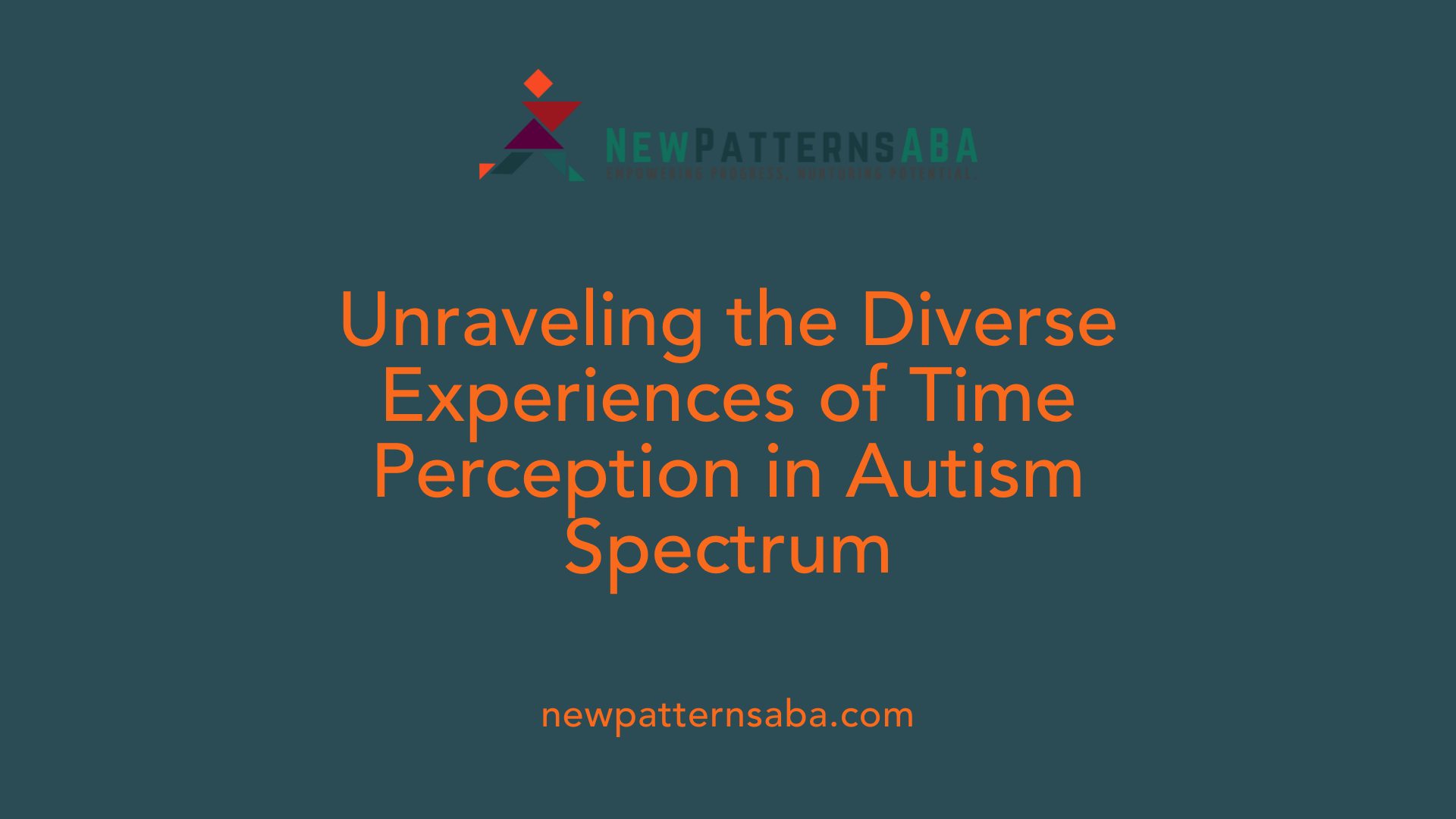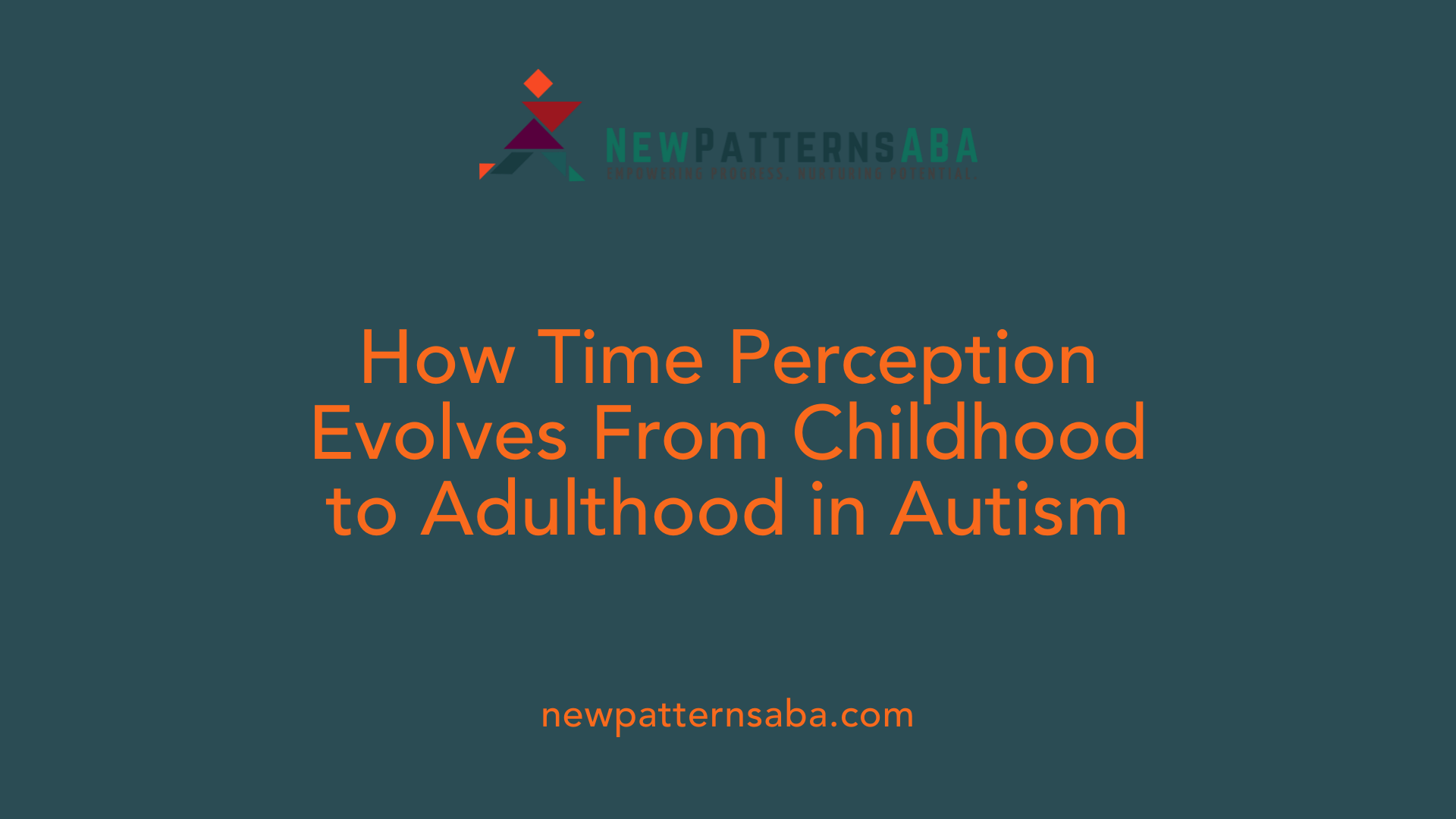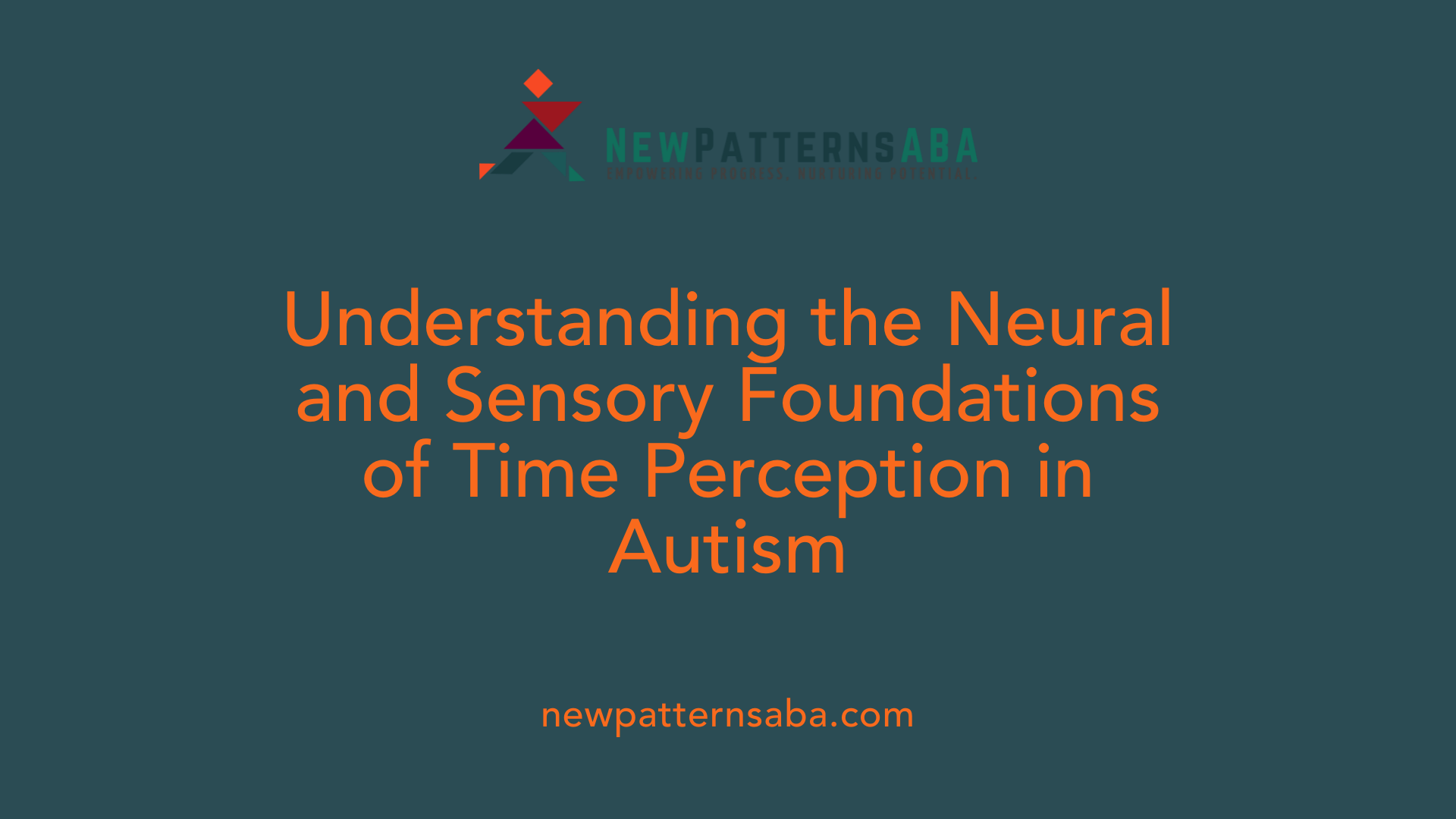Deciphering the Temporal World of Autism Spectrum Condition
Understanding How Autism Alters Our Sense of Time
Autism Spectrum Condition (ASC) encompasses a range of neural and behavioral traits that affect how individuals perceive, process, and manage time. From difficulties estimating durations to challenges following sequences of events, the perception of time is intricately linked to neurological mechanisms and developmental trajectories. This article explores how autism influences time perception, the underlying neural and psychological factors involved, and practical strategies to support individuals facing these challenges.
The Complexity of Time Perception in Autism

How does autism influence an individual's perception of time?
Autism spectrum condition (ASC) often involves challenges related to perceiving and understanding time. Many autistic individuals have difficulty gauging durations, following sequences, or understanding how time passes, which can affect daily functioning and social interactions. These issues are particularly evident in higher-level timing tasks that require understanding the order and significance of events.
Research indicates that in childhood, there may be little difference in simple temporal thresholds, but as individuals age, differences become more apparent. For example, adults with autism might show enhanced time sensitivity in some cases, contrasting with impairments seen in children, suggesting developmental shifts.
Underlying neural mechanisms include structures like the basal ganglia and cerebellum, which play vital roles in timing perception. Difficulties in these areas can lead to problems in perceiving the continuity and flow of time. Moreover, impairments in working memory, attention, and multitasking tasks further complicate time perception in autism.
Some individuals tend to overestimate or underestimate brief intervals, such as durations between 400-800 milliseconds, often judged as shorter than they actually are. This tendency points to decreased temporal sensitivity, which can create confusion around the timing of events.
In everyday life, these perception issues can lead to misunderstandings of concepts like 'tomorrow' or 'last week,' delays in speech perception, and challenges in sequencing activities. Children especially struggle with understanding hierarchical aspects of time, such as past and future stages of ongoing situations.
Despite these difficulties, some autistic individuals display strengths in reproducing very short durations, indicating specific areas of temporal processing that may be preserved or even enhanced. This heterogeneity emphasizes that autism does not uniformly impair all aspects of time perception.
Strategies such as visual supports—timers, schedules, digital clocks—and explicit teaching of time-related language (e.g., days, months, before/after) can help improve awareness and management of time. Using alarms, practicing time estimation, and integrating these tools into daily routines can significantly boost independence and quality of life.
In summary, autism can influence time perception through various neural and cognitive pathways, leading to a wide range of experiences from overestimations to difficulties in understanding the flow of time. Continued research and tailored interventions are essential to support individuals across the spectrum.
Neural Underpinnings of Time Perception in Autistic Individuals

What neurological and psychological mechanisms are involved in the relationship between autism and time perception?
Understanding how autism influences the perception of time involves examining several brain structures and neural processes. Fundamental to this discussion are the basal ganglia, cerebellum, and cortical networks, which play vital roles in different kinds of timing and temporal processing.
The basal ganglia are crucial for interval timing, helping to gauge durations in the seconds-to-minutes range. The cerebellum is essential for millisecond timing, particularly in tasks like speech coordination and sensory integration. Cortical networks, especially those involving the prefrontal cortex, are engaged in high-level temporal cognition, such as understanding sequences, planning, and anticipation.
Neuroimaging and EEG studies reveal a complex picture. Some findings show diminished temporal sensitivity in children with autism, seen through reduced event-related potentials (ERPs) like mismatch negativity (MMN), indicating less precise neural responses to temporal deviations. Conversely, certain adult studies demonstrate enhanced discrimination abilities, possibly due to neurodevelopmental adaptations.
The differential findings may relate to task complexity and developmental stages. Basic timing tasks sometimes show intact or even superior abilities, especially in adults, while complex social timing, such as synchronizing speech or gestures, tends to be impaired.
Atypical neural connectivity also impacts timing perception. Many studies suggest that abnormalities in neural pathways—such as reduced white matter insulation—can delay or disrupt the transmission of auditory and visual signals, impairing the brain’s ability to process multimodal timing cues.
Sensory processing anomalies frequently observed in autism further influence these mechanisms. For example, a wider sensory binding window — the timeframe within which multisensory signals are integrated as a single event — leads to challenges in perceiving simultaneous sights and sounds accurately.
How do EEG and neuroimaging studies illustrate neural differences in autism?
EEG studies measuring ERPs like MMN highlight reduced neural responsiveness to timing violations in children with autism, suggesting a deficit in detecting temporal discrepancies crucial for speech and social cues. However, some adult populations show increased sensitivity, implying plasticity or compensatory strategies over development.
Neuroimaging techniques, such as functional MRI and diffusion tensor imaging, reveal delays and differences in white matter integrity in timing-related pathways. These alterations can impair the precise timing of neural signals necessary for synchronizing sensory events and executing time-dependent behaviors.
Together, these neural observations underscore that autism involves complex alterations in the timing mechanisms distributed across multiple brain systems. These inconsistencies highlight the need for further research to clarify how these neural differences manifest in everyday temporal perception and social functioning.
What is the impact of neural connectivity and sensory processing anomalies?
Aberrant connectivity within and between the cerebellum, basal ganglia, and cortical areas influences how autistic individuals perceive and process time. Reduced white matter integrity can delay or distort neural communication, leading to challenges in tasks requiring precise timing.
Sensory processing differences, such as hypersensitivity or hyposensitivity to auditory and visual stimuli, affect the integration of multisensory temporal cues. For instance, a wider temporal binding window can cause individuals to perceive asynchronous events as simultaneous, impacting language comprehension and social interaction.
Interventions aimed at improving neural synchrony, like sensory integration therapy or targeted neurostimulation, are being explored to enhance temporal perception. These approaches aim to reinforce the neural connections involved in timing, potentially alleviating some communication and behavioral difficulties.
In summary, the neural underpinnings of time perception in autism involve a network of interconnected brain structures whose functioning is altered. These differences contribute to the diverse temporal experiences reported by autistic individuals and are areas of active investigation for developing better diagnostic and therapeutic strategies.
| Brain Structures | Functions in Time Perception | Observations in Autism |
|---|---|---|
| Basal Ganglia | Interval timing, decision-making | Sometimes altered activity, affecting duration estimation |
| Cerebellum | Millisecond timing, sensorimotor coordination | Structural differences linked to timing and speech issues |
| Cortical Networks | High-level cognition, sequencing | Connectivity disruptions impacting complex temporal tasks |
| White Matter Tracts | Signal transmission speed and accuracy | Delayed or abnormal white matter development |
More Resources:
- Neural mechanisms of time perception in autism
- EEG studies on autism and timing
- Brain imaging and autism
- Neural connectivity in autism
Developmental Trajectories of Time Perception in Autism

How does time perception develop in autistic individuals over the lifespan?
Research into how autistic individuals perceive and process time across different stages of life reveals a complex picture marked by variability and heterogeneity. Early childhood is often characterized by difficulties in time gauging and tracking, which may interfere with daily functioning and social interactions.
In young children, some studies report no significant differences compared to neurotypical peers, especially in basic timing abilities like millisecond and interval timing. However, other investigations highlight impairments in higher-level temporal functions, such as prospective memory—the ability to remember to perform future actions—and the ordering of events in time.
As children with autism grow into adolescence and adulthood, the pattern of timing abilities appears to diverge further. Some adults demonstrate heightened sensitivity to specific stimuli, like overestimating short durations (400-800 ms), suggesting a decrease in temporal sensitivity but an increased perceptual acuity in certain temporal tasks. Conversely, many adults show a broader 'temporal binding window,' which means they perceive asynchronous sensory events, such as sounds and sights, as occurring simultaneously more often than neurotypical individuals. This widening can contribute to sensory overload and social communication difficulties.
Neural mechanisms involved include the basal ganglia, cerebellum, and cortico-striatal circuits—all crucial for various levels of timing. Structural and functional variations in these areas, potentially influenced by genetic factors or sleep disturbances common in autism, may underpin differences in temporal processing.
Developmental changes also encompass a shift in how time perception relates to cognitive functions like working memory, attention, and language. For some, increased age correlates with improved accuracy in tasks demanding simple interval timing or duration estimation, while others retain deficits in complex temporal tasks.
Overall, the trajectory of time perception in autism is not linear or uniform. Some individuals exhibit enhanced abilities in specific temporal domains, while others face persistent challenges, especially in higher-order timing functions. Many of these differences might be rooted in neurobiological changes, developmental factors, and environmental influences. This highlights the necessity for comprehensive, lifespan-oriented research to better understand and support temporal processing at all ages.
| Age Group | Typical Findings | Noted Variations | Underlying Factors |
|---|---|---|---|
| Early childhood | Often no significant difference in basic timing tasks | Possible difficulties in complex timing | Neural immaturity, structural differences, genetic factors |
| Adolescence | Some show improved timing sensitivity | Increased biases like overestimating durations | Developmental neuroplasticity, cognitive changes |
| Adults | Either enhanced time sensitivity or broader binding windows | Impairments in temporal order judgment and multisensory integration | Brain circuit differences, sleep patterns, experiential factors |
This developmental variability underscores that time perception in autism is influenced by a multitude of factors, including biological development, experience, and environmental adaptation. Future research integrating neuroimaging, behavioral assessments, and longitudinal studies is vital for unraveling these complex trajectories.
Theoretical Perspectives Explaining Time Perception Variations

Are there theoretical models explaining differences in time perception among autistic individuals?
Multiple frameworks have been proposed to understand why individuals with autism spectrum condition (ASC) experience variations in perceiving and processing time. These models mainly center on neural connectivity, sensory processing, and multisensory integration.
One prominent approach involves neural connectivity models. These suggest that atypical neural wiring, particularly within cortico-striatal pathways and cerebellar circuits, impairs the brain's ability to accurately measure and interpret temporal information. For example, disruptions in the synchronization and communication among brain regions responsible for timing—such as the basal ganglia and cerebellum—may lead to difficulties in interval timing, millisecond-level timing, and circadian rhythms.
Sensory processing disruption theories propose that altered sensory pathways affect how stimuli are perceived and integrated over time. Many studies report that autistic individuals, especially children, tend to have abnormal responses to audiovisual synchrony and a broader temporal binding window. This means they might perceive asynchronous stimuli as simultaneous more often than neurotypical individuals, which can impact language development and social interactions.
Frameworks based on multisensory integration further explain timing differences by highlighting challenges in combining sensory inputs across modalities. Atypical multisensory processing could result in difficulties in perceiving the temporal order of sights and sounds, which underpins understanding speech, gestures, and social cues. Studies employing tasks such as temporal order judgments and simultaneity judgments consistently demonstrate that individuals with autism display wider temporal binding windows and reduced sensitivity, especially in multisensory contexts.
While these models offer valuable insights, there is no clear consensus on a single explanation. Research indicates that high-level timing tasks, involving complex cognitive processing, tend to be more affected in autism than fundamental internal clock mechanisms. Variations in findings reflect differences in study methodologies, sample characteristics, and developmental stages.
Additionally, EEG studies suggest developmental changes, with some children showing diminished neural responsiveness to timing stimuli, whereas adults may exhibit enhanced or altered neural discrimination. This underscores the importance of considering developmental trajectories in theoretical models.
Overall, although multiple theories exist, they collectively suggest that the timing differences observed in autism result from a complex interplay of disrupted neural pathways, sensory processing anomalies, and integration difficulties.
Further research employing standardized methods, larger sample sizes, and advanced neuroimaging techniques will be essential to refine these models. Understanding the underlying mechanisms is crucial for developing targeted interventions that can assist autistic individuals in managing temporal challenges—thereby improving communication, social understanding, and daily functioning.
Strategies for Supporting Better Time Management in Autism

What strategies can help autistic individuals better understand and manage their time perception difficulties?
Managing time perception difficulties in autistic individuals involves employing various practical strategies tailored to their needs. One of the most effective approaches is the use of visual supports. Visual aids such as timers, visual schedules, and alarms make the passage of time more concrete, helping reduce anxiety and increase predictability. For example, tools like the Time Timer create a visual representation of remaining time, allowing individuals to see progress and better anticipate task completion.
Breaking tasks into smaller, manageable parts is another key strategy. By dividing activities into steps and using time blocks or cues like alarms and prompts, individuals can better structure their day and become more aware of how long each activity takes. This segmentation helps enhance their planning skills and fosters a sense of accomplishment.
In addition, making abstract concepts of time more tangible can greatly improve understanding. Using relatable markers, such as routines tied to natural phenomena (like the Earth's rotation), or familiar daily events (meals, bedtime), can contextualize time and create mental anchors. These relatable cues aid in grasping concepts like ‘before,’ ‘after,’ ‘next,’ or ‘later.’
Digital tools also play a significant role. Calendar apps, digital timers, and reminder alarms can support independence by prompting transitions between activities. Establishing consistent routines and incorporating structured schedules further reinforce time awareness, reducing uncertainty and fostering autonomy.
Engaging professional support, such as occupational therapists or specialized coaches, can provide personalized strategies and teach skills to improve time management effectively. Through consistent practice of these techniques, autistic individuals can gain better control over their daily routines, enhance their independence, and improve overall quality of life.
Overall, combining visual supports, task segmentation, relatable cues, digital tools, and professional guidance provides a comprehensive approach to supporting better time management in autism.
Enhancing Awareness and Support
Understanding how autism influences time perception is crucial for developing effective interventions that improve daily functioning and quality of life. Although research shows variability and ongoing debates about specific neural mechanisms, integrating behavioral strategies and technological supports can make a significant difference. Continued exploration into the developmental and neurological aspects of time perception in autism promises to yield tailored approaches that foster greater independence, social participation, and mental well-being for autistic individuals.
References
- Time perception and autistic spectrum condition
- Autism and time management
- Time perception of individuals with subthreshold autistic traits
- Teaching the Concept of Time
- Time perception and neurodivergence: Executive function ...
- How did I get so late so soon? A review of time processing ...
- Time perception problems may explain autism symptoms
- Time perception in Autism Spectrum Condition. From ...
- "No Time Like the Present": Time Perception in Autism.
- Time perception and autistic spectrum condition






